


THE PENNINE LANCASHIRE LINEAR PARK
Unlocking the potential of the Leeds & Liverpool Canal
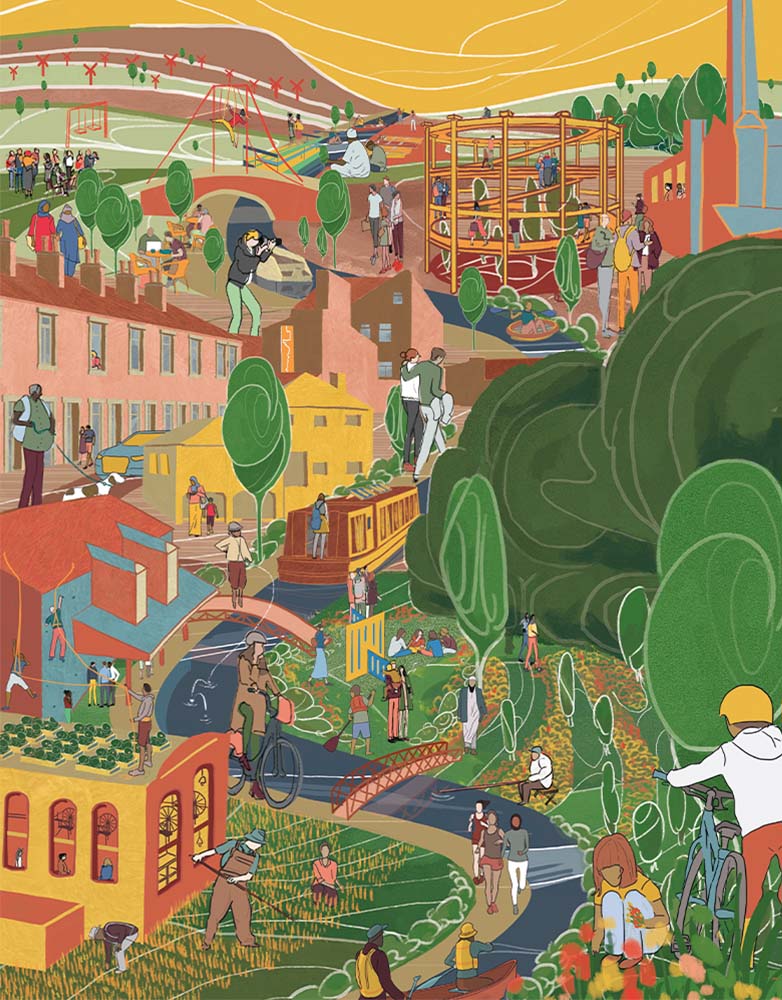
Year
2020 – 2021
Service
Vision, Strategies & Masterplans
Reports
The Pennine Lancashire Linear Park
Client
Commissioned by Arts Council England, Canal & River Trust, Creative Lancashire, Lancashire County Council and the Super Slow Way
Location
Lancashire County, England
The Pennine Lancashire Linear Park is an exciting, pioneering and deliverable vision and programme of change conceived for a 23-mile (37-kilometre) section of the Leeds & Liverpool Canal corridor.
Publica was commissioned by Arts Council England, Canal & River Trust, Creative Lancashire, Lancashire County Council and the Super Slow Way to carry out a study that would make the case for unlocking the immense potential of the area, while also serving as a call to action to reopen the debate around an ambitious and sustainable proposal to reshape the future of Pennine Lancashire.
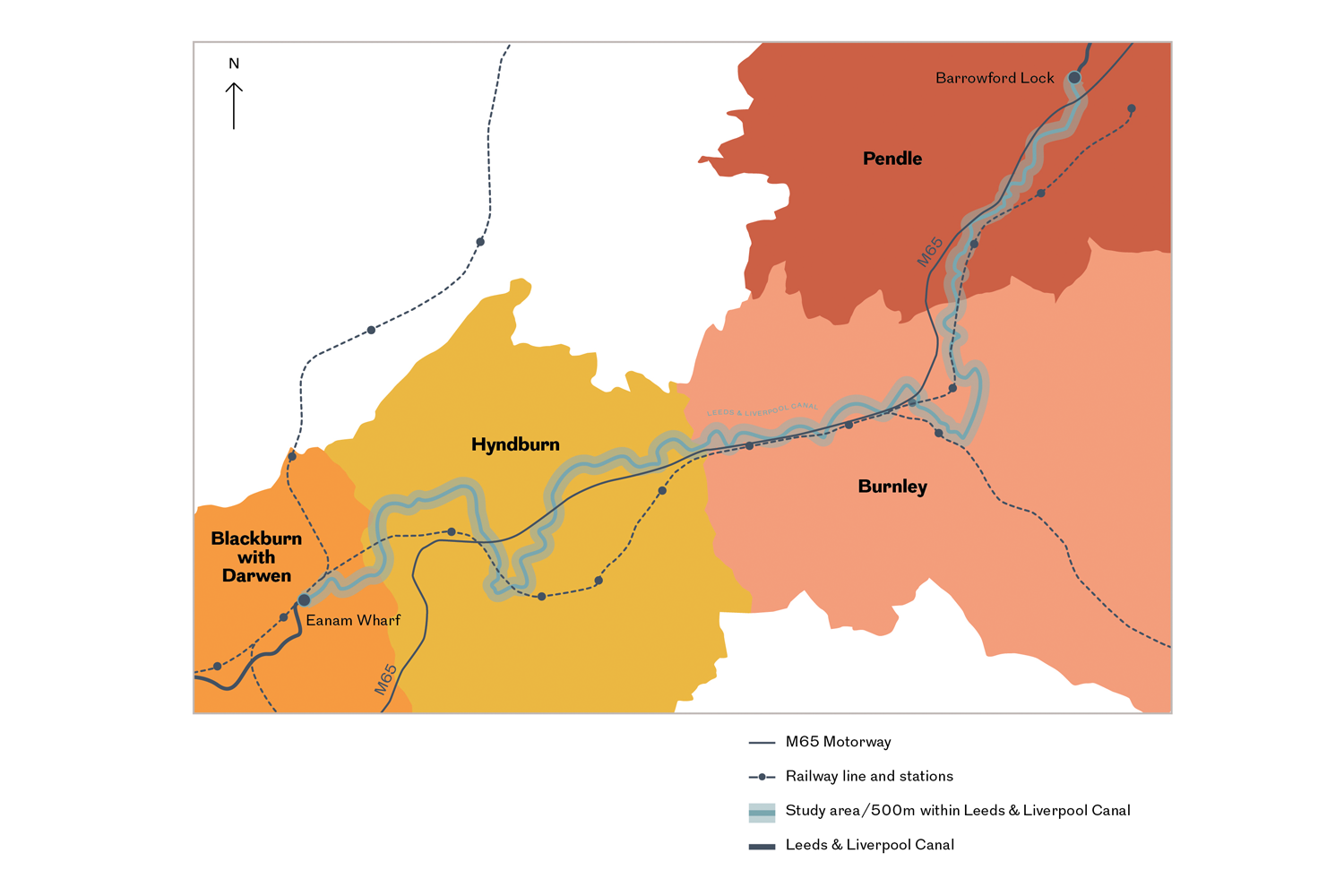
The Leeds & Liverpool Canal in Pennine Lancashire
The Linear Park concept is about bringing life back to the places and infrastructure that once supported thriving industry and created the places along its route, and the project seeks to marry physical improvements to landscape, infrastructure and buildings, to expansive programmes of environmental, cultural, leisure, educational and economic activity. Inspired by other successful examples around the world, in particular Emscher Park in the Ruhr region of Germany and the High Line in New York, the aim is to create a Linear Park that transforms quality of life as well as the environment, through ambitious and innovative processes of change.

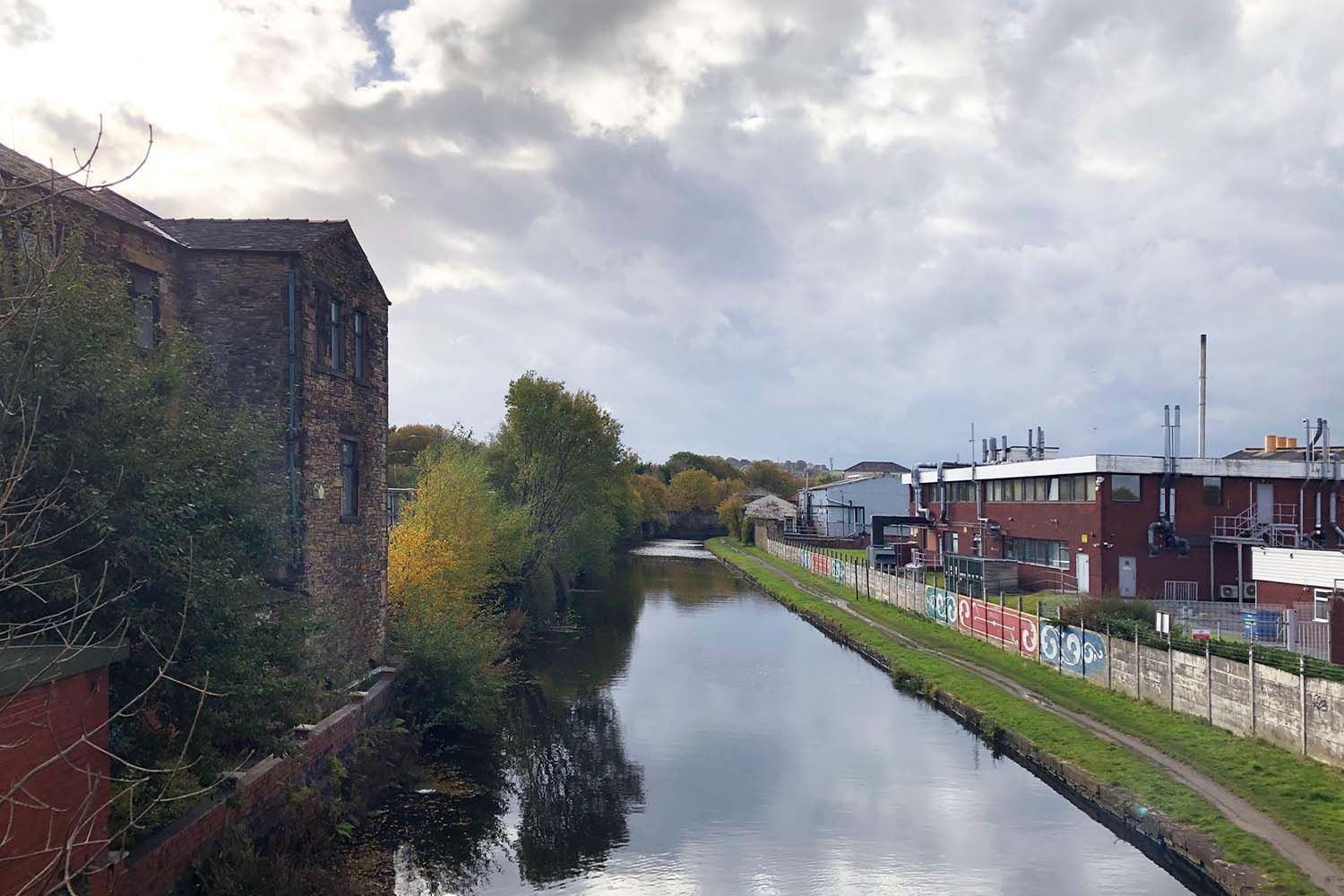
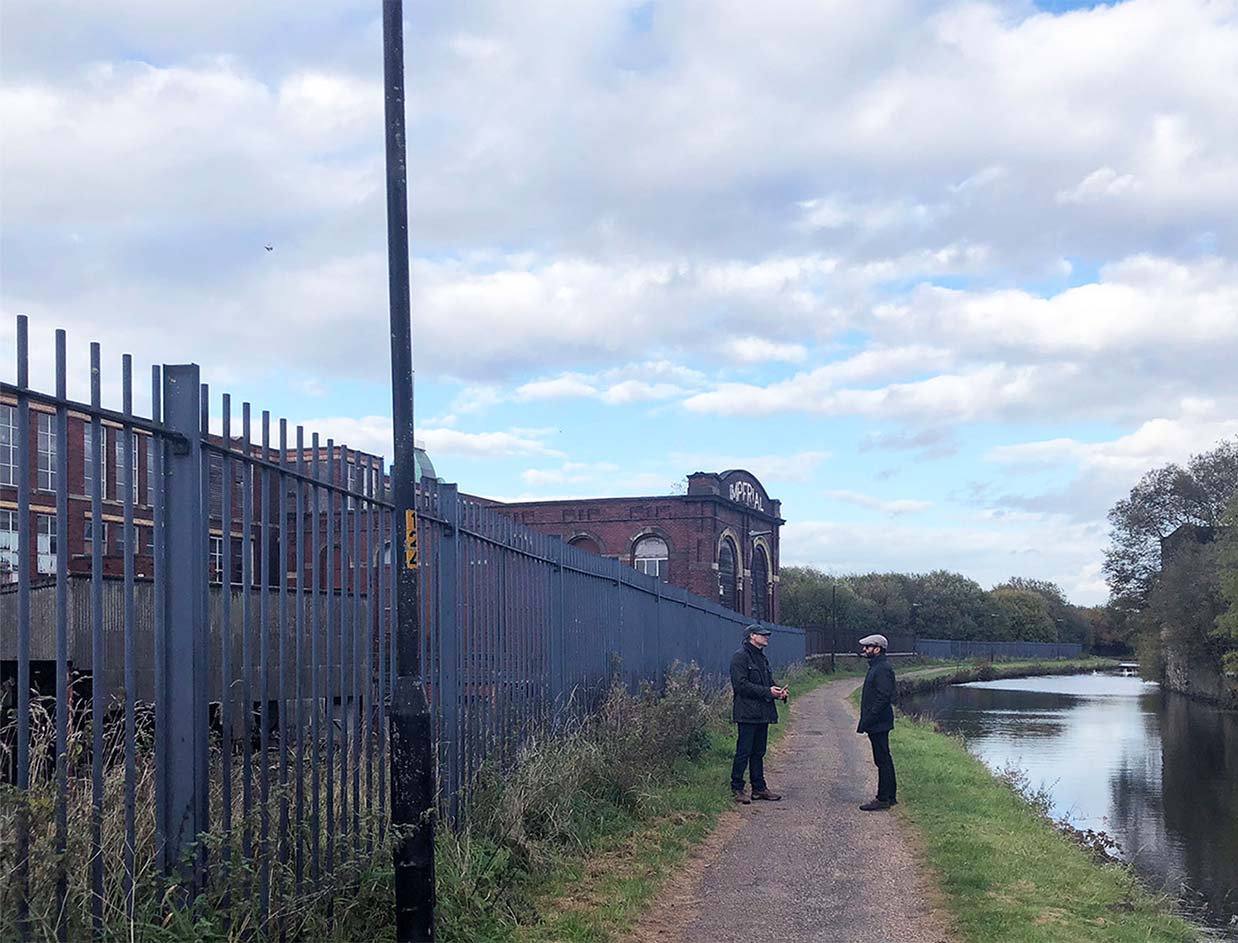
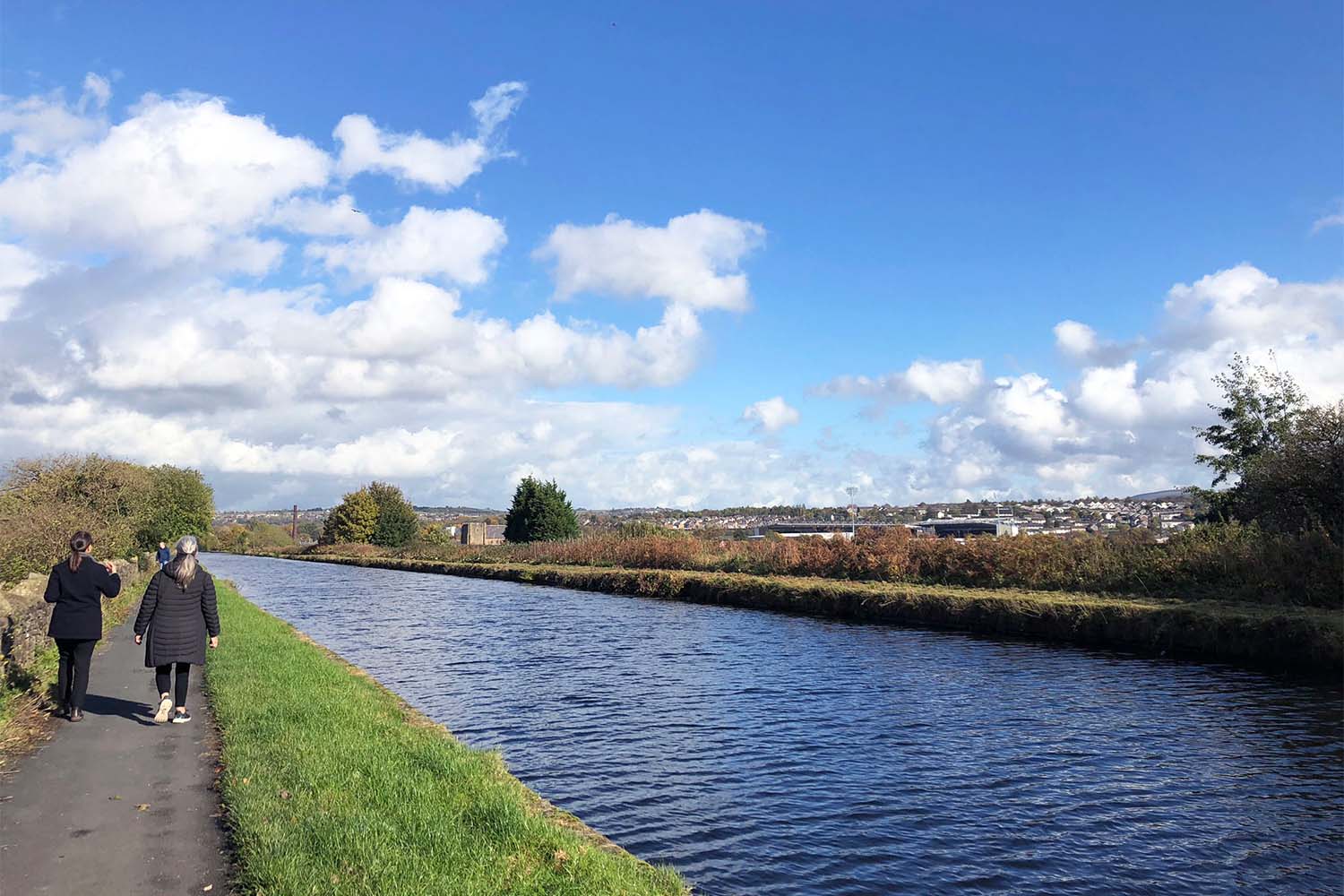

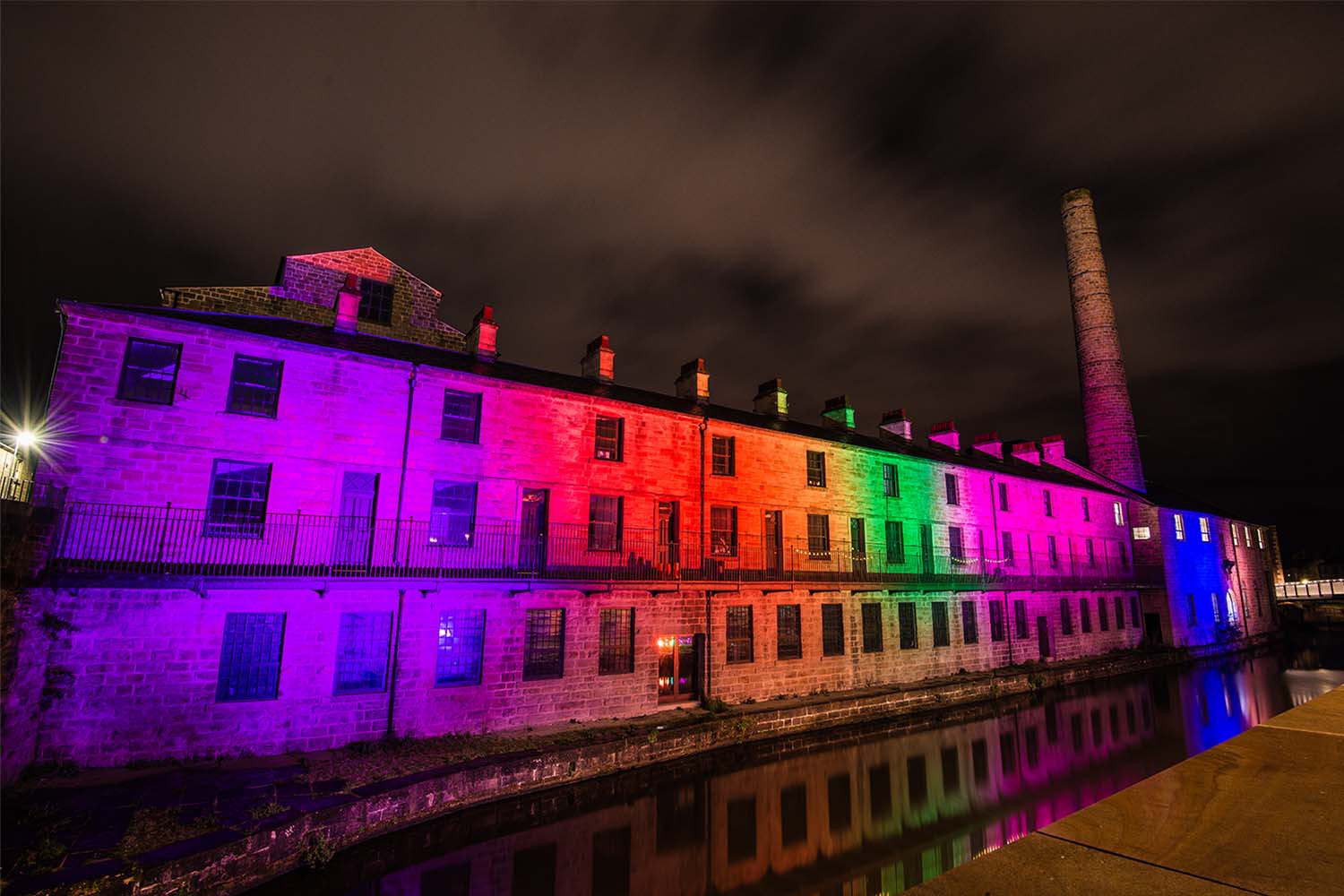
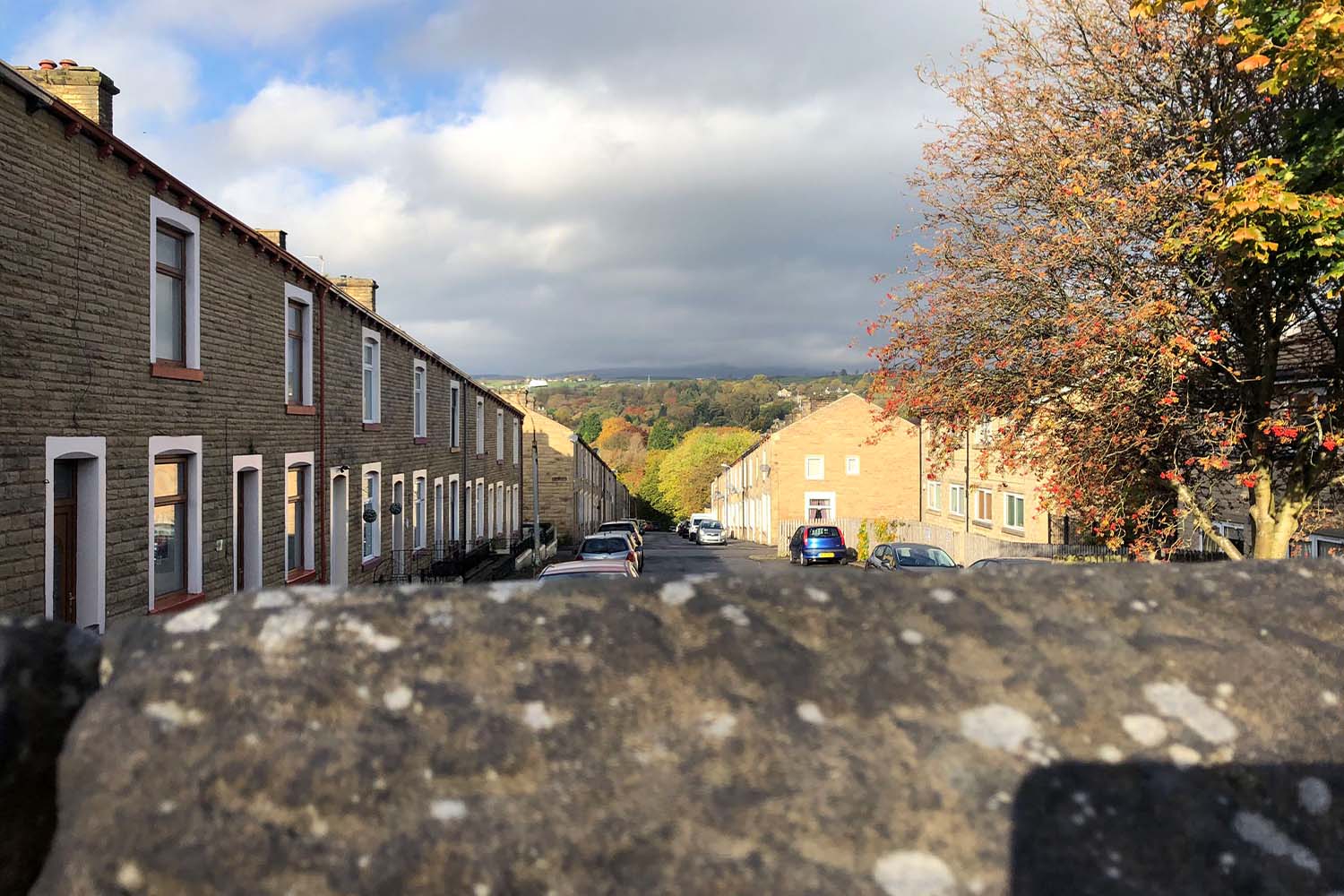
The Leeds & Liverpool Canal in Burnley, Lancashire.
Image © Burnley.co.uk
Industrial development turns its back to the canal in Hynburn.
Image © Publica
Hargreaves Warehouse, a Grade II listed 4-storey building in Church, Hyndburn, transformed into a mixed-use development, offering visitor and permanent moorings along the Leeds & Liverpool Canal, a floating allotment and a boater’s hub with facilities for visitors.
Image © Publica
The Burnley Embankment – known locally as ‘The Straight Mile’ – offers clear views across the town centre.
Image © Publica
Guests at the Shapes of Water Sounds of Hope Banquet in the Brierfield Mill.
Image © Chris Payne
Sandygate Square in Burnley illuminated as part of a performance by Burnley Youth Theatre.
Image © Matthew Savage
Enclosing walls in Nelson create access barriers and poor connections to the town centre with developments turning their backs to the canal in Pendle.
Image © Publica
The proposed Lancashire Linear Park is within a section of the Leeds & Liverpool Canal that spans four district authorities – Blackburn with Darwen, Hyndburn, Burnley and Pendle – and passes through several towns built around the textile industry. Imagined as a linear park, the canal could once again form the basis for creating opportunities for people to live, play, to be inspired and productive; to learn new skills; and above all to build a new, greener future for themselves and their families.
Completed in 1816, the Leeds & Liverpool Canal represented a great achievement for civil engineering and enabled the textile industry to grow exponentially and become central to the nation’s prosperity. But two centuries later, needs have changed. Many people are out of work, climate change is wreaking havoc on the planet and public health is in crisis. In the face of these challenges, how can the canal once again play a central role for local prosperity? How can we unlock the precious green, brown and blue spaces along its course through the towns of Pennine Lancashire to tackle these urgent issues?
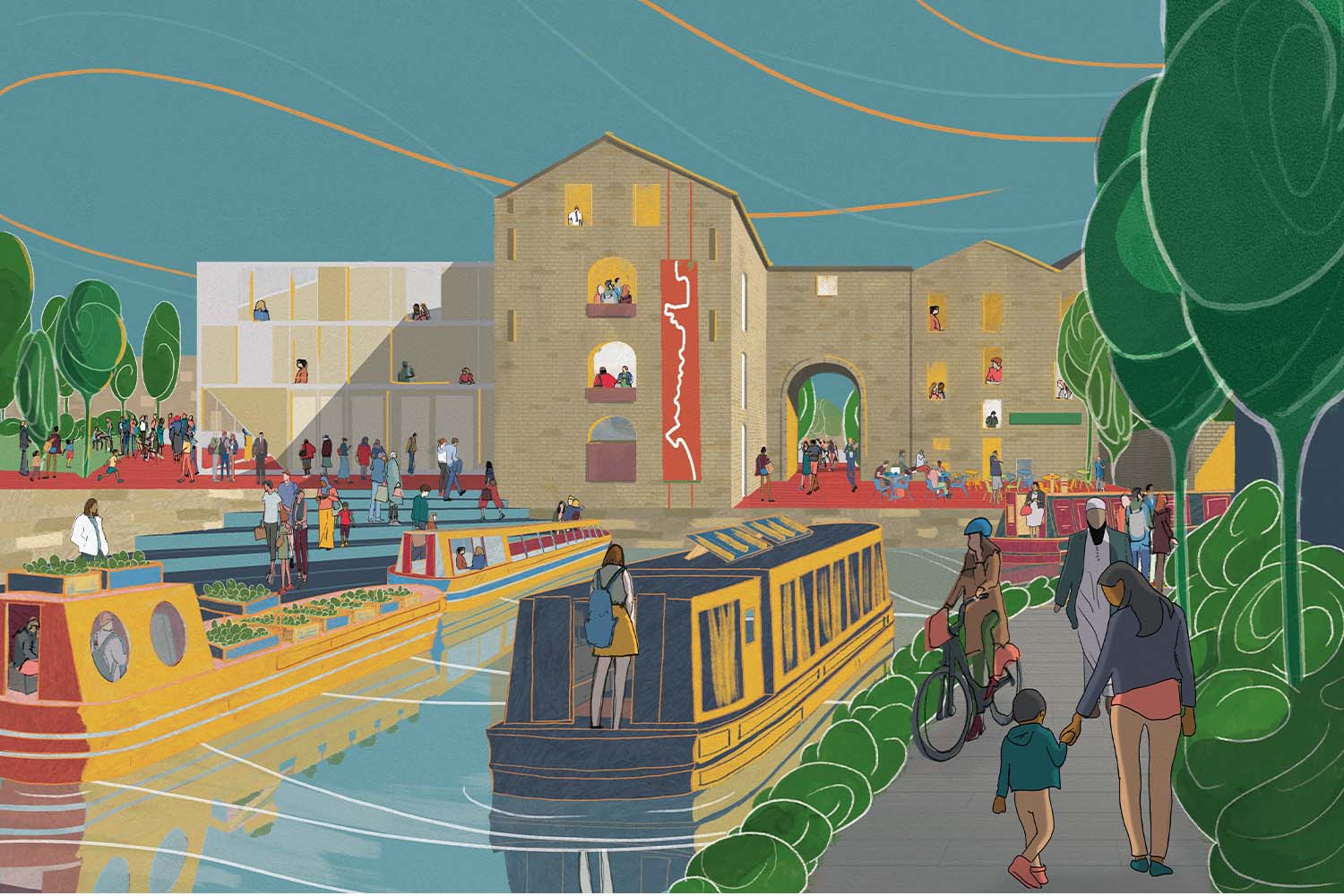
Hargreaves Warehouse, a Grade II listed 4-storey building in Church, Hyndburn, transformed into a mixed-use development, offering visitor and permanent moorings along the Leeds & Liverpool Canal, a floating allotment and a boater’s hub with facilities for visitors.
The study identified three interconnected pathways towards the creation of the Pennine Lancashire Linear Park. Each pathway describes four potential headline projects, and outlines an indicative timeline, project type, expected co-benefits and wider impact, and magnitude of investment required. These include:
Creating a green movement corridor: The Linear Park as a green movement corridor, providing improved infrastructure for pedestrians, cyclists and boating communities and exploiting the canal’s potential for waterborne freight and other uses.
Providing for culture, leisure and tourism: The Linear Park as an ecological and recreational destination, providing temporary and permanent civic, cultural, community and leisure activities and uses.
Stimulating resilient local economies: The Linear Park as a productive corridor, encouraging opportunities for sustainable local businesses and resilient communities through re-use of heritage and land assets, skills development, education and clean, green (inclusive) growth.
“It’s a fantastic boost for the Linear Park project and for Lancashire to have recruited consultants of the calibre and reputation of Publica and Buro Happold. The Pennine Lancashire Linear Park has the potential to deliver transformational change to the area through a holistic and ambitious approach. The positive and wide-reaching impacts of similar regenerative projects, particularly along waterways, have been seen – and measured – around the world.”
LAURIE PEAKE, DIRECTOR, THE SUPER SLOW WAY
Building upon the heritage of the area’s textile industry, the canal offers a rich interweaving of themes to form the narrative of a vision, with making at its heart. Conceptualised as a ‘string of pearls’, the Linear Park will connect key sites of special visitor interest and activity along the canal. More importantly, by concentrating on local narratives the project can engender civic pride, with local communities integral to the regeneration of the canal as a Linear Park and active participants in its future.
The Linear Park has the potential to bring together communities, businesses, academia and local authorities unifying a broad scope of possible interventions as a linear heritage, recreational and cultural resource. The key to its success will depend on the determined and co-ordinated effort of all involved to effect real change. It also offers a blueprint for post-Covid recovery; for a carbon neutral future, for a resilient economy and, above all, to enhance quality of life among the communities of this rich post-industrial and bio-diverse landscape.
THE PENNINE LANCASHIRE LINEAR PARK
Unlocking the potential of the Leeds & Liverpool Canal

Year
2020 – 2021
Service
Vision, Strategies & Masterplans
Reports
The Pennine Lancashire Linear Park
Client
Commissioned by Arts Council England, Canal & River Trust, Creative Lancashire, Lancashire County Council and the Super Slow Way
Location
Lancashire County, England
The Pennine Lancashire Linear Park is an exciting, pioneering and deliverable vision and programme of change conceived for a 23-mile (37-kilometre) section of the Leeds & Liverpool Canal corridor.
Publica was commissioned by Arts Council England, Canal & River Trust, Creative Lancashire, Lancashire County Council and the Super Slow Way to carry out a study that would make the case for unlocking the immense potential of the area, while also serving as a call to action to reopen the debate around an ambitious and sustainable proposal to reshape the future of Pennine Lancashire.

The Leeds & Liverpool Canal in Pennine Lancashire
The Linear Park concept is about bringing life back to the places and infrastructure that once supported thriving industry and created the places along its route, and the project seeks to marry physical improvements to landscape, infrastructure and buildings, to expansive programmes of environmental, cultural, leisure, educational and economic activity. Inspired by other successful examples around the world, in particular Emscher Park in the Ruhr region of Germany and the High Line in New York, the aim is to create a Linear Park that transforms quality of life as well as the environment, through ambitious and innovative processes of change.







The Leeds & Liverpool Canal in Burnley, Lancashire.
Image © Burnley.co.uk
Industrial development turns its back to the canal in Hynburn.
Image © Publica
Hargreaves Warehouse, a Grade II listed 4-storey building in Church, Hyndburn, transformed into a mixed-use development, offering visitor and permanent moorings along the Leeds & Liverpool Canal, a floating allotment and a boater’s hub with facilities for visitors.
Image © Publica
The Burnley Embankment – known locally as ‘The Straight Mile’ – offers clear views across the town centre.
Image © Publica
Guests at the Shapes of Water Sounds of Hope Banquet in the Brierfield Mill.
Image © Chris Payne
Sandygate Square in Burnley illuminated as part of a performance by Burnley Youth Theatre.
Image © Matthew Savage
Enclosing walls in Nelson create access barriers and poor connections to the town centre with developments turning their backs to the canal in Pendle.
Image © Publica
The proposed Lancashire Linear Park is within a section of the Leeds & Liverpool Canal that spans four district authorities – Blackburn with Darwen, Hyndburn, Burnley and Pendle – and passes through several towns built around the textile industry. Imagined as a linear park, the canal could once again form the basis for creating opportunities for people to live, play, to be inspired and productive; to learn new skills; and above all to build a new, greener future for themselves and their families.
Completed in 1816, the Leeds & Liverpool Canal represented a great achievement for civil engineering and enabled the textile industry to grow exponentially and become central to the nation’s prosperity. But two centuries later, needs have changed. Many people are out of work, climate change is wreaking havoc on the planet and public health is in crisis. In the face of these challenges, how can the canal once again play a central role for local prosperity? How can we unlock the precious green, brown and blue spaces along its course through the towns of Pennine Lancashire to tackle these urgent issues?

Hargreaves Warehouse, a Grade II listed 4-storey building in Church, Hyndburn, transformed into a mixed-use development, offering visitor and permanent moorings along the Leeds & Liverpool Canal, a floating allotment and a boater’s hub with facilities for visitors.
The study identified three interconnected pathways towards the creation of the Pennine Lancashire Linear Park. Each pathway describes four potential headline projects, and outlines an indicative timeline, project type, expected co-benefits and wider impact, and magnitude of investment required. These include:
Creating a green movement corridor: The Linear Park as a green movement corridor, providing improved infrastructure for pedestrians, cyclists and boating communities and exploiting the canal’s potential for waterborne freight and other uses.
Providing for culture, leisure and tourism: The Linear Park as an ecological and recreational destination, providing temporary and permanent civic, cultural, community and leisure activities and uses.
Stimulating resilient local economies: The Linear Park as a productive corridor, encouraging opportunities for sustainable local businesses and resilient communities through re-use of heritage and land assets, skills development, education and clean, green (inclusive) growth.
“It’s a fantastic boost for the Linear Park project and for Lancashire to have recruited consultants of the calibre and reputation of Publica and Buro Happold. The Pennine Lancashire Linear Park has the potential to deliver transformational change to the area through a holistic and ambitious approach. The positive and wide-reaching impacts of similar regenerative projects, particularly along waterways, have been seen— and measured—around the world.”
LAURIE PEAKE, DIRECTOR, THE SUPER SLOW WAY
Building upon the heritage of the area’s textile industry, the canal offers a rich interweaving of themes to form the narrative of a vision, with making at its heart. Conceptualised as a ‘string of pearls’, the Linear Park will connect key sites of special visitor interest and activity along the canal. More importantly, by concentrating on local narratives the project can engender civic pride, with local communities integral to the regeneration of the canal as a Linear Park and active participants in its future.
The Linear Park has the potential to bring together communities, businesses, academia and local authorities unifying a broad scope of possible interventions as a linear heritage, recreational and cultural resource. The key to its success will depend on the determined and co-ordinated effort of all involved to effect real change. It also offers a blueprint for post-Covid recovery; for a carbon neutral future, for a resilient economy and, above all, to enhance quality of life among the communities of this rich post-industrial and bio-diverse landscape.